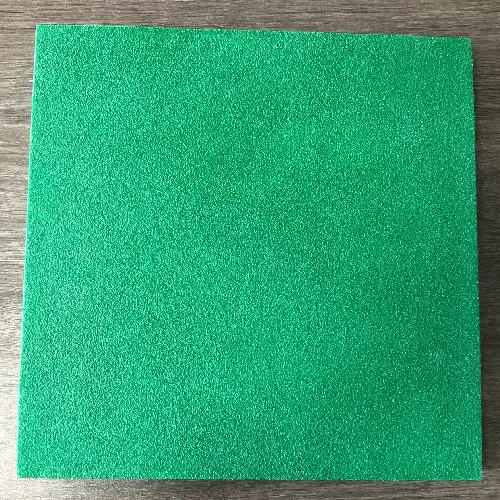loading...
- No. 9, Xingyuan South Street, Dongwaihuan Road, Zaoqiang County, Hengshui, Hebei, China
- admin@zjcomposites.com
- +86 15097380338
- Welcome to visit our website!
frp angle bar
Understanding FRP Angle Bars A Modern Solution for Structural Applications
Fiber Reinforced Polymer (FRP) angle bars have emerged as a game-changer in construction and engineering, offering remarkable advantages over traditional materials such as steel and aluminum. These innovative materials are designed to withstand extreme conditions, making them suitable for a variety of applications in both industrial and commercial settings.
What Are FRP Angle Bars?
FRP angle bars are structural components made from a composite of polymer resins and reinforcing fibers, such as glass or carbon fibers. The unique manufacturing process of these bars results in a product that is not only lightweight but also incredibly strong and durable. Typically, they come in various standard shapes and sizes, making them versatile for numerous structural applications.
Advantages of FRP Angle Bars
1. Corrosion Resistance One of the most significant benefits of FRP angle bars is their resistance to corrosion. Unlike steel, which can rust when exposed to moisture and harsh chemicals, FRP materials remain intact even in the most corrosive environments. This attribute makes them ideal for use in industries like marine, chemical processing, and wastewater treatment.
2. Lightweight Properties FRP angle bars are significantly lighter than their steel counterparts, making transportation and installation easier and more cost-effective. This characteristic is particularly beneficial in projects where reducing the overall weight of structures is crucial, contributing to lower foundation costs and enhanced structural efficiency.
frp angle bar

3. High Strength-to-Weight Ratio Despite their lightweight nature, FRP angle bars boast an impressive strength-to-weight ratio. They maintain their structural integrity under heavy loads, ensuring safety and reliability in construction applications. This strength allows for more flexible design possibilities, enabling engineers to create more innovative structures.
4. Thermal Insulation FRP materials offer good thermal insulation properties. This feature aids in energy efficiency in buildings, minimizing heating and cooling costs. In environments where temperature fluctuations are significant, using FRP can help maintain a stable internal climate.
5. Sustainability As the world increasingly focuses on sustainability, FRP angle bars stand out as an eco-friendly option. They are often produced using recyclable materials, and their long service life contributes to reduced waste and lower environmental impact over time.
Applications of FRP Angle Bars
The versatility of FRP angle bars allows for countless applications across various sectors. In construction, they can be used for structural reinforcement, brackets, and supports. In the electrical sector, FRP angle bars serve as poles and crossarms for power lines. Additionally, their lightweight and corrosion-resistant properties make them ideal for use in marine environments, such as docks and piers.
Conclusion
FRP angle bars represent a significant advancement in engineering materials, offering numerous advantages that traditional materials cannot match. As industries strive for higher efficiency, durability, and sustainability in their projects, the demand for FRP products is likely to increase. Understanding the benefits and potential applications of FRP angle bars is essential for engineers, architects, and decision-makers seeking to embrace innovative solutions in their construction and design projects. Transitioning to FRP materials not only enhances structural performance but also aligns with the growing commitment to sustainability in modern engineering practices.
-
The Power of Filter VesselsNewsMay.19,2025
-
The Benefits of FRP WalkwaysNewsMay.19,2025
-
The Benefits of FRP Vessels: 1054 FRP VesselNewsMay.19,2025
-
FRP Pressure Vessels: Leading the Way in Innovation and ReliabilityNewsMay.19,2025
-
Explore the Benefits of FRP Grating for Your Industrial NeedsNewsMay.19,2025
-
Discover the Advantages of GRP GratingsNewsMay.19,2025
-
Revolutionary Modular Handrail Systems Redefine Safety StandardsNewsMay.15,2025
